- Baking powder is an essential ingredient in baking and cooking.
- It is a leavening agent that helps in making baked goodies, like cakes and muffins, as well as fluffy and light.
- Baking powder contains a filler or buffer to prevent premature reaction between the base and the acid in it.
- The filler in the baking powder of different brands may or may not contain gluten, thus impacting the “gluten free” status of the baking powder.
Is baking powder gluten free? What about baking soda? What’s the difference between them actually? So many questions, and all you wanted was to make a chocolate cake.
In this article we will go through whether baking powder is gluten free or not, explain what is the difference between baking soda and baking powder, and also give you some popular gluten free baking powder brands so you can shop with ease.
Do you love baking? Then you’re probably familiar with the common ingredient, i.e., baking powder. It is an essential component to get a perfectly baked cake or muffin.
What’s a good cake if it’s not light, fluffy, and spongy, and just the right level of “moist”?
And, it’s not just cakes that become better because of this wonderful leavening agent.
The pancakes you have for breakfast become a little bit softer and more delicious because of baking powder.
You can even put it in omelets and fried chicken and whatnot, to get incredible textures in them!
However, is baking powder gluten free? This question does not have a standard answer. The gluten content of the baking powder you’re using depends on the brand.
Every baking powder has a moisture absorbent filler. The baking powder is gluten free if this filler is cornstarch or wheat starch.
However, if the baking powder has wheat starch, it automatically has gluten content.
Is Baking Powder Gluten Free?
Baking powder, a chemical leaven, is used for preparing baked items, and even for other cooking processes, to incorporate air into the food.
The ingredients of baking powder are of three kinds – a base, an acid, and a moisture absorbent to keep the first two from reacting prematurely.
When the base and the acid in baking powder get exposed to liquid, they react with each other and release carbon dioxide. That is the reason your cake or pancake batter rises and becomes spongy.
You can even add it to the frying batter, to make the outside coating of your food crispy.
Every brand has a different recipe for baking powder. In the case of most brands, this leaven contains the following:
- baking soda, i.e., sodium bicarb, which is a base
- cream of tartar, i.e., potassium bitartrate, which is an acid
- Cornstarch, i.e., a moisture absorbent
Of these, the moisture absorbent is the ingredient that determines whether a baking powder can be considered gluten free or not.
Some brands replace cornstarch with wheat starch or potato starch. As you know, gluten comes from wheat, barley, or rye. This means, if the filler of the baking powder is made from wheat, then it is obviously not gluten free.
On the other hand, if the filler is cornstarch, potato starch, or some other non-gluten starch, only then can we call the baking powder gluten free.
Therefore, whether or not baking powder is gluten free depends on the three-ingredient recipe used by the brand.
The only way to find out if the baking soda you’re using is gluten free or not is by reading the list of ingredients. In the US, most brands use cornstarch in them instead of wheat starch.
Related: Is vegetable oil gluten free | Instant Pudding Gluten Free Brands
It is also a good idea to find yourself a baking powder brand that is allowed to label itself as “gluten free”. This will eliminate all chances of cross-contamination, as well.
Why Moisture Absorbent is Needed in Baking Powder
Here’s something you might remember from your chemistry lessons – when a base and an acid reacts, they release carbon dioxide.
By that logic, the base and the acid in the baking soda produce carbon dioxide, which is responsible for making every batter airy.
This essentially means, the base and the acid are doing all the job. Then, why is there a third element, i.e., the starchy component added to the baking powder?
You see, it is liquid that can activate the acidic and the basic elements of the baking powder and cause it to release carbon dioxide.
It is very easy for the two components to draw moisture from the air. Humidity, after all, is quite common in the kitchen environment.
This will moisture in the air can lead to a premature chemical reaction. When that happens, we are only left with a form of salt. With the carbon dioxide already released, the powder is of no more use in the cooking or baking process.
That is where the moisture absorbent in the form of some kind of a starch comes in.
This starchy ingredient absorbs the moisture from the air and keeps it from activating the chemical reaction. It is only when this baking soda is put in a batter with large amounts of liquid that the base and the acid can react.
The carbon dioxide, thus released, helps your batter to increase in volume, gloriously.
Baking Powder vs Other Leaveners
As we mentioned earlier, baking powder is a leavener; it helps a batter or dough to rise and increase in volume. However, baking powder is not the only leavening agent.
Other examples that help leaven a dough or batter include steam, air, yeast, and baking soda.
Just like baking powder, baking soda is a leavener that produces carbon dioxide through a chemical reaction.
As for air, it can be incorporated manually by beating the batter properly and for a long time.
Then there’s steam, which increases the volume of a mixture as the water content in the preparation turns to steam. Finally, there’s yeast, that releases carbon dioxide through fermentation.
Single Acting Baking Powder vs and Double Acting Baking Powder
Baking powder is not as simple as you might think. It has its own shades of character.
This leavening agent has two forms – the double-acting baking powder and the single-acting baking powder. So, what is the difference, you ask? Let’s find out!
The primary difference between these two is the number of acidic components. In single-acting baking powder, there’s only one acidic component.
On the other hand, the number increases to two in double-acting baking powder. But why is that needed?
When the single-acting baking powder comes in contact with liquid, it starts to react instantly.
So, after adding it to the batter, you must begin the cooking process immediately. Otherwise, the bubbling action will stop, and the mixture will become heavy again.
However, with double-acting baking powder, things are different. Besides the acidic component that reacts with the base, it contains another acidic component.
It acts slowly, as it gets activated by heat only. As a result, the batter receives twice the leavening boost: during mixing, as well as during baking.
If you’re baking gluten free goodies, this double-action becomes essential in making your cakes and bread fluffy.
That is because the gluten free baking ingredients are not as elastic as glutinous ingredients. So, a little extra leavener can go a long way in making the item perfect.
Baking Powder vs Baking Soda
Did you think baking powder and baking soda are one and the same? Well, no, they aren’t. Both are leavening agents that help a batter to rise.
However, the way they react, because of their constituents, is what makes them different from each other.
Here’s how they vary from each other:
a) Baking soda is just sodium bicarbonate. But, in baking powder, there are three components – an acid, a filler, and sodium bicarbonate. That means baking soda itself is present in baking powder.
b) In order to react and begin the leavening process, baking soda needs liquid, as well as an acid. However, since baking powder already contains acid, it can be activated using a liquid, alone.
In some recipes, you’ll find that both of these leavening agents are used. In such cases, the main leavening action is performed by the baking powder.
The baking soda, on the other hand, helps in neutralizing all the acids used in the recipe. Besides, it adds tenderness by adding some further leavening action.
Gluten Free Baking Powder Recipe
Did you know that you can make your very own baking powder at home? And, it’s going to be completely free from any gluten content!
It’s a three-ingredient recipe, and can be fixed in no time at all! Here’s the recipe of gluten free baking powder:
Ingredients:
- Baking Soda
- Cream of Tartar
- Cornstarch
Instructions:
All these items are dry ingredients. The ratio of baking soda, cream of tartar, and cornstarch should be 1:2:1.
So take two parts of cream of tartar for every 1 part of baking soda. And, the quantity of cornstarch should be the same as baking soda.
Mix the ingredients quickly, and your baking powder is ready to be stored away and used later.
As the recipe has cornstarch, it will not absorb moisture from the air. So, it can be used later.
However, remember that cornstarch is only a filler, and does nothing for the actual chemical reaction.
So, if you can use it immediately, then a mix of baking soda and cream of tartar in a 1:2 ratio is enough for leavening.
Gluten Free Chocolate Cake Recipe
What’s the use of a gluten free baking powder if your entire recipe demands other gluten-containing ingredients?
It is possible to replace wheat flour with non-gluten flours in any recipe. You’ll find many gluten free flours that come from almonds, xanthan gum, sorghum, oats, and more. Or it can be a blend of these.
Here’s a delicious cake recipe for you, which is completely free from gluten!
Ingredients:
For Cake:
- Granulated sugar – 1 ½ cups
- Flour blend (gluten free) – 2 cups
- Cocoa powder (unsweetened) – 3/4 cup
- Baking powder – 1 ½ tsp
- Baking soda – 1 ½ tsp
- Salt – 1 tsp
- Egg (large) – 2 (at room temperature)
- Milk – 1 cup
- Oil – Half cup
- Vanilla extract – 1 ½ tsp
- Boiling water – ¾ cup
For Frosting:
- Butter – Half cup
- Vanilla extract – 1 ½ tsp
- Cocoa powder – Half cup
- Powdered sugar – 4 ½ cups
- Milk – ¼ cup
Instructions:
- Preheat the oven to 350°F. Place the rack in the oven’s center. Take two cake pans of 8 inches and set them aside.
- Put the sugar, flour blend, cocoa powder, salt, baking soda, and baking powder in a mixing bowl and stir them together.
- Now, into the dry ingredients, add milk, eggs, vanilla extract, and oil, and beat it all for 2 minutes with a hand blender on medium speed.
- Now, divide the batter into the two cake pans, and bake them for 35-38 minutes.
- Take them out of the oven and wait for 5 minutes for them to cool. Then, remove the cakes from the pans and place them on the cooling rack.
- In a different bowl, add butter and vanilla and beat them to make a creamy, smooth mixture.
- Next, add cocoa powder and beat again to mix it in. Ne
- After that, add the sugar powder, one cup at a time.
- Beat the mix and keep adding milk in small batches.
- Once you reach a soft, creamy, and firm consistency, put it on the cake.
Your gluten free chocolate cake is ready! Just remember to pick a flour blend that’s for baking.
Gluten Free Baking Powders
There are several baking powder brands available in the market, giving you completely gluten free products. Here’s a list of the most reliable among them:
Dr. Oetker Baking Powder – This raising agent is a popular ingredient for making cakes, pastries, puddings, and scones. Made of maize starch, this is the perfect addition to gluten free recipes.
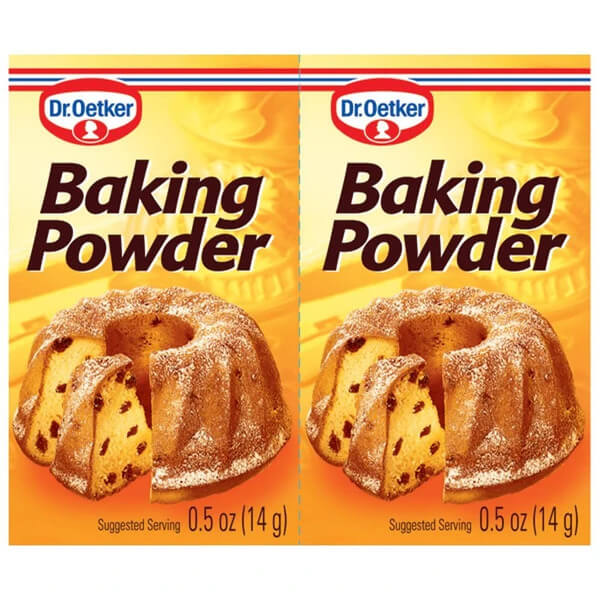
Watkins – Another popular choice as a leavening agent, this one is made with cornstarch as its filler. It is a double-acting baking powder variant with additional baking soda present in an alkaline state, too.
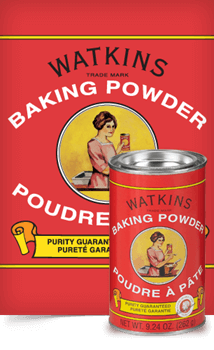
Calumet – This double-acting baking powder is excellent for making anything from cakes and bread to biscuits and pancakes. The buffer in this baking powder is cornstarch, making it free from gluten.
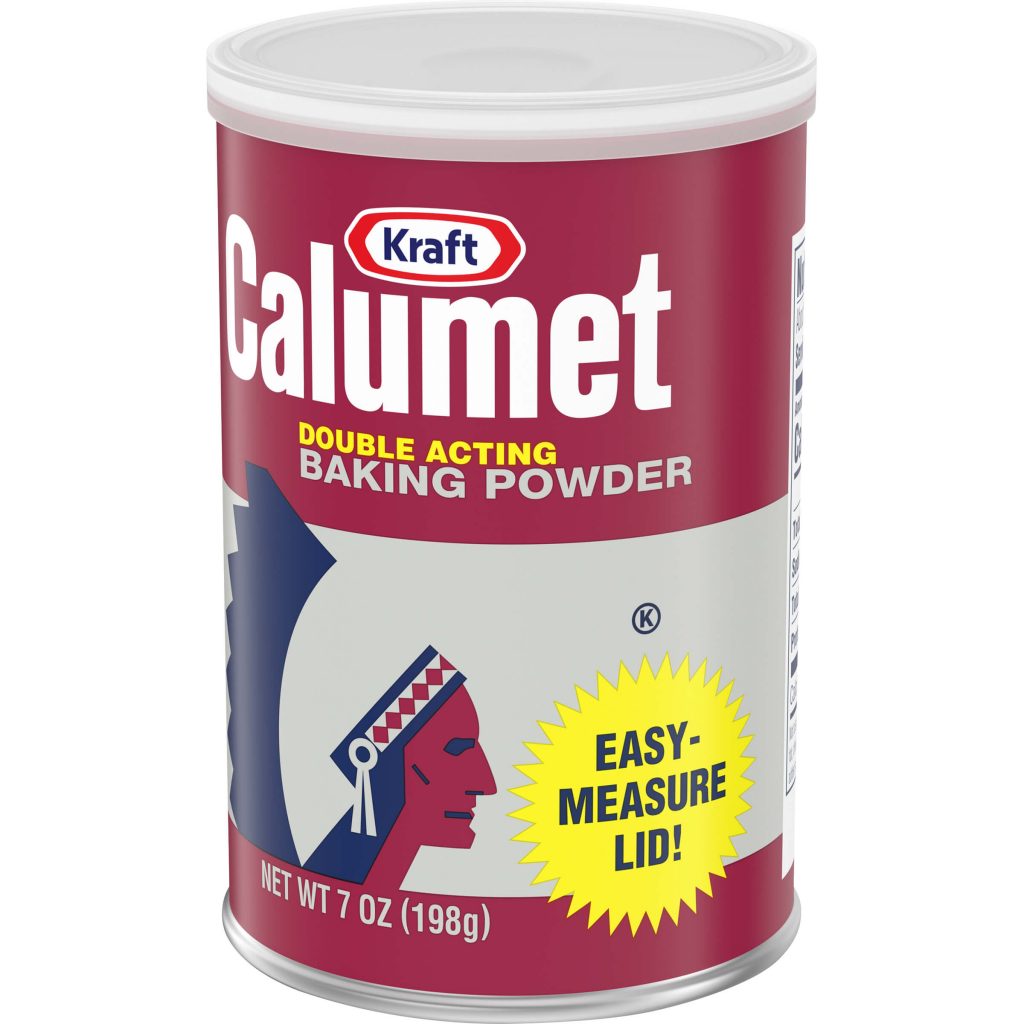
Rumford – Another double-acting baking powder that is relied upon by home-bakers, as well as pros, this leavening agent is gluten free, as it contains cornstarch. So, you can use it in no-gluten recipes.
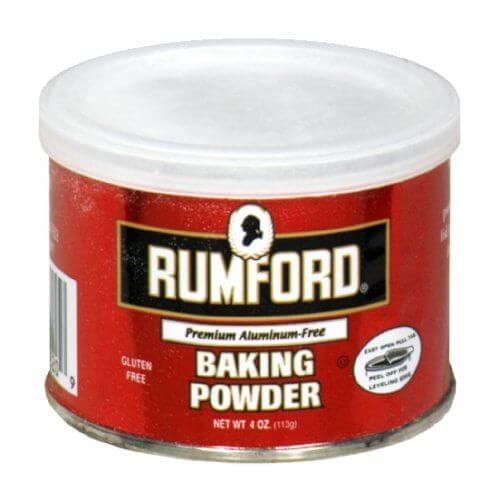
Clabber Girl – This baking powder has one of the highest usages in the US in industry-level production as well as at home. It contains cornstarch as the moisture absorbent, and is, therefore, gluten free.
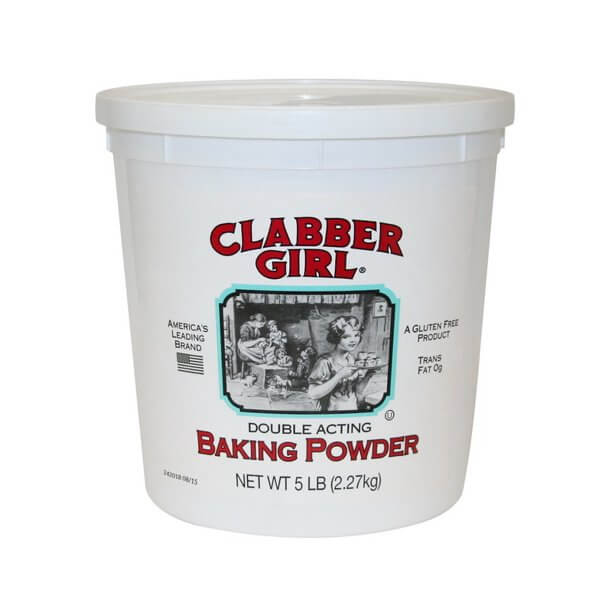
Conclusion:
Whether the baking powder you’re using is gluten free or not depends on the ingredient used in it as a filler.
Most of them use cornstarch, which is gluten free. However, you must check the label to make sure that wheat starch is not used in the baking powder.
Besides the list of ingredients, it is a good idea to pick a baking powder that is labeled gluten free.
However, using gluten free baking powder is not enough. You must make sure to replace your glutinous ingredients in baking, like wheat flour, with no-gluten ingredients like almond flour.